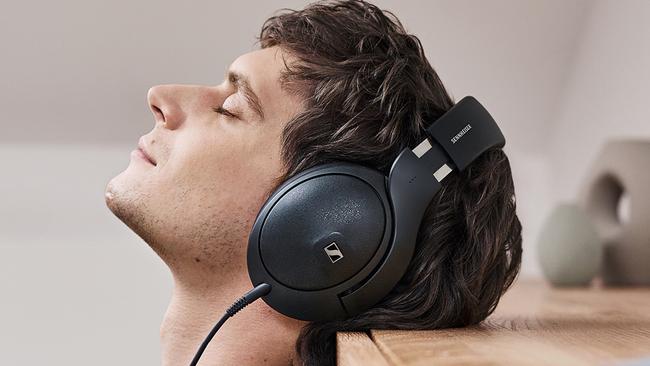I’m still standing after hearing Elton John’s lips smacking with these headphones
Custom-tuned in Ireland, these two Sennheiser audiophile headphones are perfect companions for a Sunday afternoon – if you don’t mind a few surprises.

Business
Don't miss out on the headlines from Business. Followed categories will be added to My News.
The last thing I expected after trialling what Sennheiser calls its audiophile quality headphones was Elton John’s lips smacking together.
Whether this enhances your listening experience is completely subjective. For me, it shows just how much detail they can capture.
I’m a big fan of old tech. I love old film cameras, my vinyl records and my 20-year-old video iPod.
The iPod – itself inspired by another piece of vintage kit, the 1958 Braun T3 transistor radio – looks great on my desk. Cradled in its charging dock, it has become a classic piece of industrial design – and it still works.
It was recalled for service when I received a pair of what Sennheiser calls its audiophile quality headphones, the HD 620S and the HD 550.
The 620S and 550 have no bluetooth, only a cable connection, to maintain as much detail as possible when listening to music.
Sennheiser has talked up a big game with these headphones, with the HD 550 and 620S’s transducers (which converts electrical signals into sound) made at its audiophile production facility in Tullamore, Ireland. It mentions audiophile no less than eight times in its release – and we know what a finicky bunch they are.
So do these headphones live up to their claims?

Plugging in
Unlike their wireless compatriots, there are no buttons or taps you need to master to control these headphones. Just plug them in.
Both headphones come with a threaded 6.3mm adaptor for a larger port if needed.
The fit doesn’t feel quite as snug as some of top selling wireless headphones, and takes some adjusting. Sennheiser says it has adopted a more relaxed clamping force for comfort. The two headphones are different in design and materials, with the 620S having fake leather cups, while the 550 uses a velour-type material.
They are also light. The HD 550 weighs 237 grams and the 620S comes in slightly heavier at 326 grams. This compares with 415 grams for the Dyson OnTrac and 384.8 grams for Apple AirPods Max. Batteries are heavy.
The sound
The first song that came up on my iPod was Elton John’s Tiny Dancer. I’ve heard this countless times but on the HD 550, it sounded different. I could hear Elton’s lips smacking together in the opening lines.
Now, whether you want to hear Elton’s lips smacking and whether it enhances the audio experience is completely up to you. For me it shows the level of detail these headphones can capture.
I tried a few wireless headphones – Apple AirPods Max, Dyson Ontrack, Sonos Ace – and could hardly hear the lip smacking.
Both deliver frequencies beyond the upper limit of human hearing. The 550 provides 6-39,500 hertz, while the 620S delivers up to 30,000 hertz. This compares with 6-21,000 hertz for the Dyson OnTrac.

Oddly, the 620S, which retails for $599.95, seems to capture more detail than the 550, which is cheaper at $499.95.
This could be that the 620S has a closed-back design, while the 550 is open-back. Sennheiser says open headphones are normally a purist’s favourite, but closed is favoured when you want more isolation from the world around you – and the 620S features more passive noise cancelling, but doesn’t feel boxy.
Sennheiser says this is because it features an angled baffle to “encourage the free movement of air, modelling the behaviour of open-back transducers”.
The HD 620S has a 42mm dynamic transducer, while the 550 has a 38mm transducer. This gives it a balanced airy sound with a deep yet clear bass. Sennheiser says “thanks to a high damping factor, the 150-ohm aluminium voice coil (another piece of kit that converts electric signals into sound) excels at speedy transients and well-defined instrument tails for punchy dynamics across the entire frequency spectrum”.
Bottom line
You might not see too many of the 620S and 550 on trains or planes. The 1.8m cables make it too awkward. But for those who want to slow down and listen to an album right through – via custom-tuned transducers from Tullamore, perhaps cradling a glass of Tullamore Dew – then both these headphones provide a delightful listening experience. They are more suited for a pleasant Sunday afternoon than a daily commute.
Originally published as I’m still standing after hearing Elton John’s lips smacking with these headphones





